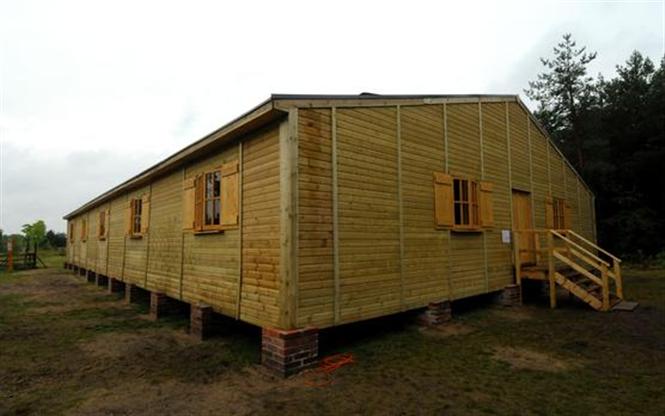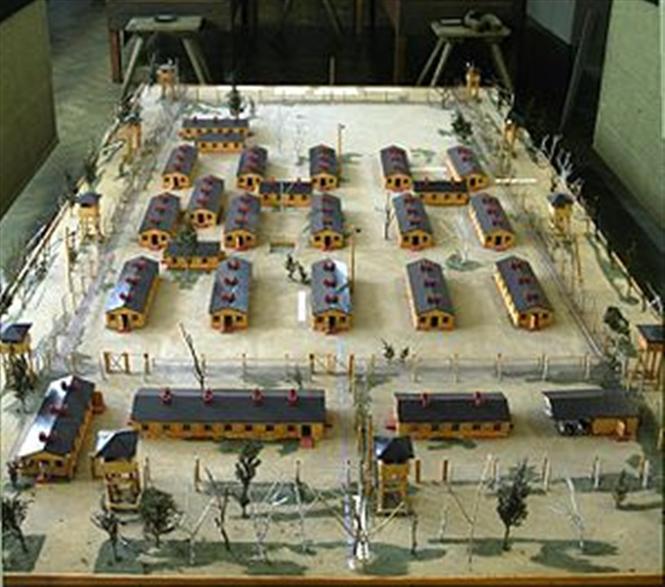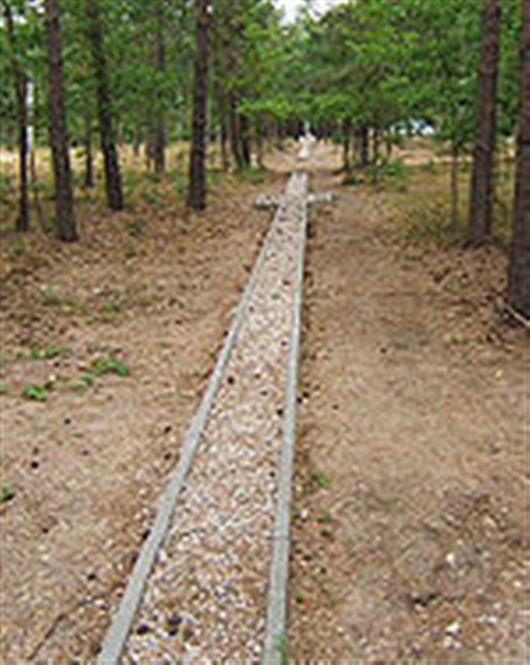Poland - POW Hut 104 at Stalag Luft III
Description
Known as The Great Escape Memorial: a replica of POW hut 104 from which the entrance to an escape tunnel, codenamed 'Harry', was dug during the Second World War.
The hut acts as a memorial to all those who were POW's at Stalag Luft III and as an 'education centre' for future visits by Service personnel and the public.
History
Stalag Luft III was built specifically for Aircrew POWs captured by the Germans during the Second World War. It was controlled directly by the High Command of the Luftwaffe. At first, the majority of the prisoners were British RAF Officers and American pilots. Only later, in June 1942 did other nationalities join the camp including many Australians, mostly RAAF. By 1944 it accommodated 10,494 people. Perhaps the large number of POWs helped to conceal the amount of attempted escapes.
The biggest of them was 'The Great Escape' organised by a secret 'X' Committee which was established by the prisoners in the spring of 1943 and led by Sqn Ldr Roger Bushell. The tunnel was an astonishing feat of organisation, engineering and teamwork involving thirty workers underground and three hundred aboveground.
The entrance for Harry started from under a stove which stood on a tiled area about 3 sq feet (.3 sq m). A wooden frame was made on which the tiles were reset then hinged so that the whole cover and stove could slide. The shaft was sunk about 25 feet down (7.5m) in order to get the tunnel well below the sound detectors placed under the boundary wire. The tunnel itself was just over 2 sq feet (.2 sq m) and had to be completely shored with boards, taken from the bunk beds, as they were digging in sand. Each piece of wood had to be dove tailed, an air pump constructed and a railway line and trolley to bring the sand out of the tunnel. The disposal of the sand was crucial as the discovery of freshly dug sand by the Germans was the biggest single cause of failed tunnelling attempts throughout the Camps. This was made all the more difficult as the sand was almost white whereas the surface of the camp was a blackish grey loam. The total sand dispersed of by the completion of the work was some 230 tons. There was a team that made maps, travel papers and passes for foreign workers and a tailors department who altered uniforms, made civilian suits and even a couple of German Army uniforms. All of this was achieved whilst under constant threat of snap searches by security guards.
The Great Escape took place on the night of 24 March 1944. Seventy six prisoners made it outside through a tunnel 350 feet (107m) long. After the escape was revealed and the alarm was raised, four prisoners were caught by the tunnel outlet and a hunt began within the Reich. Consequently, only 3 of the prisoners managed to avoid recapture, the remaining 73 were caught by the Nazis. It was the biggest escape ever from the Zagan camp and in pursuance of Hitler's personal order, called 'Zagan Befeh', 50 of the escapees were murdered.
Construction Information
A half size reconstruction of the original POW hut. The hut was constructed by volunteers from the RAF, RAAF, Royal Navy and Army.
Location
unknown, Zagan, Poland.
Zagan is approximately 420 kms from Poland's capital of Krakow and 210 kms from Berlin.
Driving into Zagan from either direction is Route 296 (Lotnikow Alianckich). Turn right onto Obwodowa, the site of the Great Escape Museum and Stalag Luft III, is in an area to the left of this road.



